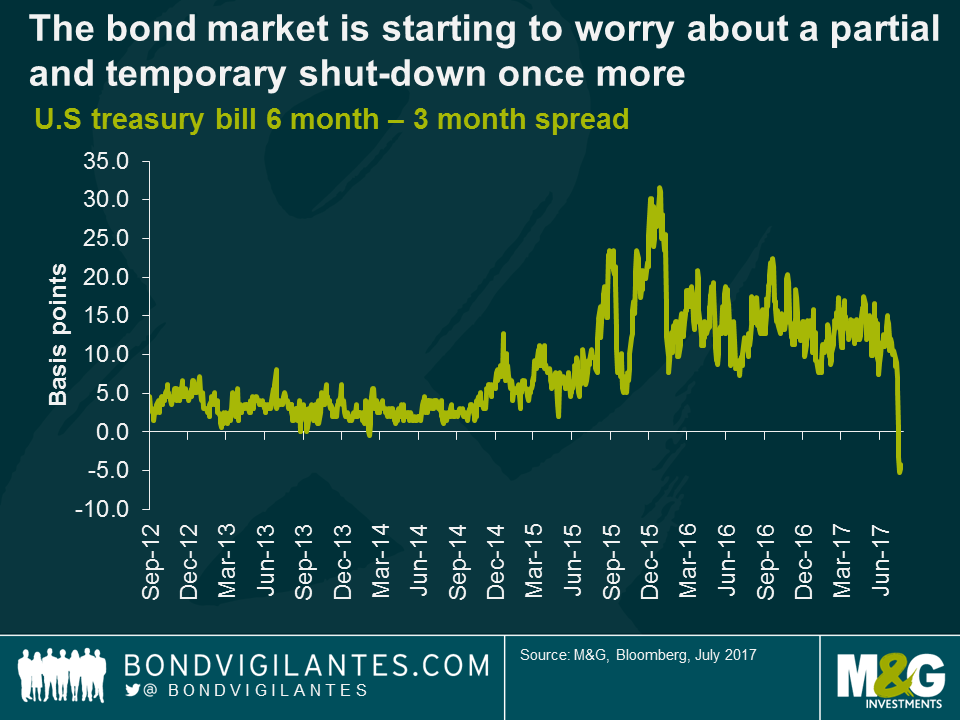Debt ceiling tremors in the Treasury market
The United States is fast approaching the point at which its indebtedness reaches its debt limit, which generally is approved by Congress without debate. Routinely in the past the debt ceiling would be raised, reflecting that it does not affect the amount of spending, but only makes sure the U.S. can pay for spending it is committed to whether by tax receipts or by borrowing. It is about ensuring the U.S. can pay its bills.
Well, by most estimates we are now three months or so away from the U.S. once again hitting its debt ceiling. In the event that Congress does not raise the limit, then the U.S. Treasury would have to default on its bond obligations, or immediately curtail payments to public programmes or employees, known as a partial government shut down. In the Summer of 2011, Republicans demanded that in order for the debt ceiling to be raised, spending would have to be cut and taxes rise no further. Democrats wanted to see higher spending funded by higher taxation, and so Congress could not agree to raise the debt ceiling.
The U.S. entered a debt issuance suspension period in May, and would have run out of funds on 2nd August 2011, at which point either the U.S. Treasury would default, or it would have had to cut spending drastically overnight seeing government employees and programmes losing funding with clearly disastrous impacts on aggregate demand. The debt ceiling passed votes at both houses at the eleventh hour, on 1st August, and the default was avoided.
Given how little appears to be being done by the present administration at the moment, one can be forgiven for thinking ‘here we go again’. The chart below shows that in recent sessions the cost of 3 month money to the Treasury has surpassed that of 6 month money, so the curve has inverted for the first time in a long time. The bond market is starting to worry about a partial and temporary shut-down once more.
What should investors do then, if they are concerned about the debt ceiling not being raised and the U.S. is to find itself unable to pay its bills? Selling Treasuries might seem like the obvious trade, but it’s worth remembering that in the suspension period between April and August 2011, Treasury yields actually rallied. There was a period in late June and early July when default fears escalated and yields rose by approximately 40 basis points (c.4 point fall on the 10 year Treasury bond). This was soon reversed though, as concerns around a U.S. default brought a healthy dose of risk off to global markets, which saw Treasury yields continue to fall. A partial shutdown can’t be viewed positively for the U.S. economy, though, and if programmes are shut down and employees aren’t paid, then unemployment will rise, wages will fall, and aggregate demand will fall, which will put to bed fears of the U.S. economy overheating and further rate hikes being expected. So it’s a big issue. But the direction of Treasury yields and bond yields priced over them is highly uncertain, and indeed counterintuitive. Be careful.
The value of investments will fluctuate, which will cause prices to fall as well as rise and you may not get back the original amount you invested. Past performance is not a guide to future performance.


18 years of comment
Discover historical blogs from our extensive archive with our Blast from the past feature. View the most popular blogs posted this month - 5, 10 or 15 years ago!


Bond Vigilantes
Get Bond Vigilantes updates straight to your inbox







